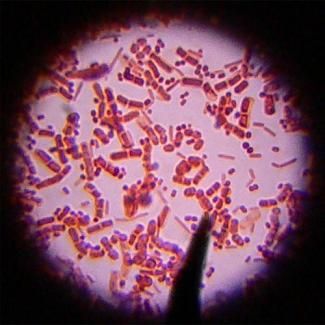- Home
- Editorial
- News
- Practice Guidelines
- Anesthesiology Guidelines
- Cancer Guidelines
- Cardiac Sciences Guidelines
- Critical Care Guidelines
- Dentistry Guidelines
- Dermatology Guidelines
- Diabetes and Endo Guidelines
- Diagnostics Guidelines
- ENT Guidelines
- Featured Practice Guidelines
- Gastroenterology Guidelines
- Geriatrics Guidelines
- Medicine Guidelines
- Nephrology Guidelines
- Neurosciences Guidelines
- Obs and Gynae Guidelines
- Ophthalmology Guidelines
- Orthopaedics Guidelines
- Paediatrics Guidelines
- Psychiatry Guidelines
- Pulmonology Guidelines
- Radiology Guidelines
- Surgery Guidelines
- Urology Guidelines
Electronic Nose to sniff out bacteria that cause soft tissue infections

A recent study conducted at the University of Tampere, Tampere University of Technology, Pirkanmaa Hospital District and Fimlab in Finland has concluded that an electronic nose (eNose) can be used to identify the most common bacteria causing soft tissue infections.
The eNose can be used to detect the bacteria without the prior preparation of samples, and the system was capable of differentiating methicillin-resistant Staphylococcus aureus (MRSA) from methicillin-sensitive Staphylococcus aureus (MSSA).
Skin and soft tissue infections are common diseases that need medical treatment. Their diagnosis is usually based on bacterial cultures, but in uncomplicated cases the diagnosis may be made directly based on the clinical presentation of the disease. However, this may lead to empirical antibiotic treatments, i.e. treatments without a specific diagnosis, which may result in longer treatment times, adverse effects and increased costs.
"Our aim was to create a method for the rapid diagnosis of soft tissue infections. If we had such a method, treatment could be started in a timely manner and targeted to the relevant pathogen directly. This would reduce the need for empirical treatments and shorten diagnostic delays," says doctoral researcher Taavi Saviauk from the Faculty of Medicine and Life Sciences at the University of Tampere.
"The portable eNose device we used does not require laboratory conditions or special training, so it is well suited for outpatient use. The results of this study are a significant step towards our goal," Saviauk continues.
An electronic nose is a device that produces "an olfactory profile" for each molecular compound in the air. The results are analysed by a computer and the system is programmed to differentiate between different compounds.
The research group conducting the study has previously shown how an eNose can be successfully used to differentiate prostate cancer from benign prostatic hyperplasia using a urine sample and distinguish between the various bacteria that cause urinary tract infections.
For more details click on the link: European Surgical Research, 2018; 1 DOI: 10.1159/000485461
European Surgical Researchmethicillin-sensitive Staphylococcus aureusprostate cancersoft tissue infectionsUrinary Tract Infections
Source : Press ReleaseNext Story
NO DATA FOUND

Disclaimer: This site is primarily intended for healthcare professionals. Any content/information on this website does not replace the advice of medical and/or health professionals and should not be construed as medical/diagnostic advice/endorsement or prescription. Use of this site is subject to our terms of use, privacy policy, advertisement policy. © 2020 Minerva Medical Treatment Pvt Ltd